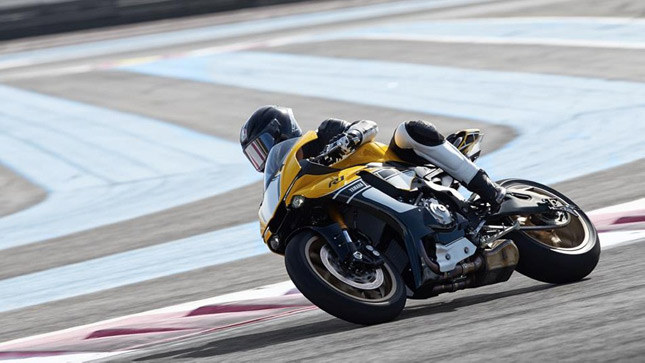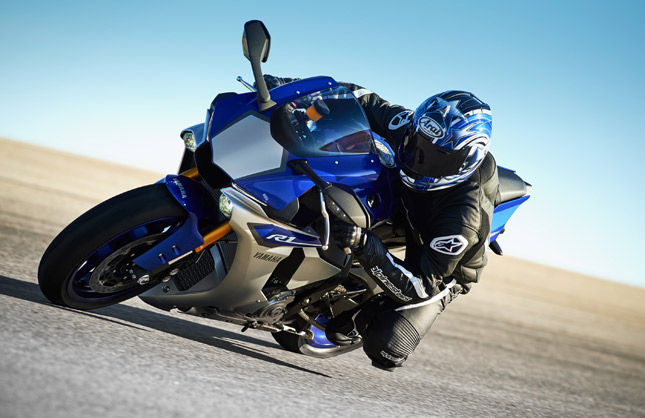 Many modern motorcycles today are coming up with slipper clutch on them which they say aids in the downshifting and cornering of the bike. Now as much as this is true, one has to know as to why this is so important and how much of a difference does the presence of a slipper clutch make to all this. So in this article we are going to check out the importance of a slipper clutch, its working and why it is so important in modern day bikes.
Many modern motorcycles today are coming up with slipper clutch on them which they say aids in the downshifting and cornering of the bike. Now as much as this is true, one has to know as to why this is so important and how much of a difference does the presence of a slipper clutch make to all this. So in this article we are going to check out the importance of a slipper clutch, its working and why it is so important in modern day bikes.RELATED ARTICLE: How The Motorcycle Clutch Works?
But before everything, we have to know what a slipper clutch is. So to explain that lets take an example. You are on your bike doing 120 kmph on a straight highway. Suddenly you encounter a corner up ahead and you know that you are not going to make the corner at this speed even at maximum lean. That means you are going to have to slow down. So suddenly you hit the brakes and pull the clutch lever and shift down on the gears too.
When this happens, you come to say from 6th gear down to 2nd or 3rd but your bike speed is still 80 kmph and you are now entering the corner. What happens is when the gears are downshifted and the engine RPM rises to match the rear wheel speed, the high RPM starts engine braking. This is to bring the rear wheel to match the engine speed so that the bike can be easily controlled. But in this very process due to the quick slowing on the rear wheel, there are chances that sometimes the rear wheel gets locked up for a short time span enough to cause loss of traction and result in slipping of the bike. What happens takes place in less than a second, but the implications of it are long lasting resulting in rear wheel lockup and you even heading towards a really bad crash.
 So then what is the solution for all this? It is the slipper clutch. This clutch is made with a purpose to slip as the name suggests. The design of the clutch is such, that when the engine speed does not match the rear wheel speed, the clutch simply disengages and lets the wheel rotate freely until it comes back to the matching range. This means the rear wheel is left rotating to slow down by itself due to external braking as engine braking will not interfere in it. this works out for the good since there are no more locking and slipping of the wheel due to the clutch functioning.
So then what is the solution for all this? It is the slipper clutch. This clutch is made with a purpose to slip as the name suggests. The design of the clutch is such, that when the engine speed does not match the rear wheel speed, the clutch simply disengages and lets the wheel rotate freely until it comes back to the matching range. This means the rear wheel is left rotating to slow down by itself due to external braking as engine braking will not interfere in it. this works out for the good since there are no more locking and slipping of the wheel due to the clutch functioning.So now in the same scenario discussed above, consider you are on a bike with a slipper clutch. Suddenly you come across the corner and hit the brakes hard and downshift. Now when you downshift and the engine speed does not match the wheel speed, you have nothing to worry about because when you let go off the clutch lever, the clutch will engage and will check if the speeds are matching. If it does then well and good, else the clutch will slip and let the rear wheel spin and come down to the matching revv range all by itself. This makes sure there are no slipping incidents caused.
Another place where slipper clutch comes handy is while downshifting regularly. It is not that important but it does come handy there. When you are on a straight road and you have to stop all of a sudden. You happen to downshift quickly and instead of second you shift into 1st gear. Now when you let go off the clutch, your bike will give some heavy jerks as it tries to slow down and the engine braking comes into play. But in case of a slipper clutch you do not have to worry about the jerking because the clutch slips and you do not feel a thing.
READ ALSO: Motorcycle Slipper Clutch- A Brief Introduction
Now the main reason as to why they are put only in high capacity motorcycles or fast motorcycles. The bikes that can go up to a maximum speed of about 120 kmph, they have enough braking power to bring the bike to cornering speeds by regular braking. But the bikes which cross the 150 kmph threshold mark might pose a bit of an issue in getting the bike down to slower speeds quickly and hence there is an issue with the downshifting and hence the rear wheel lockup and the rest of the issues. This is the reason why.
So if you are one of those who have slipper clutch on your bikes, consider yourself lucky. But those who do not have it, be a little cautious about while cornering in fast speeds and make sure you enter the corner or even slow down with ease and not in a sudden rush. Use your riding gear at all times, ride safe and stay tuned to BikesIndia for more on 2 wheels.
By: Pratik Patole











